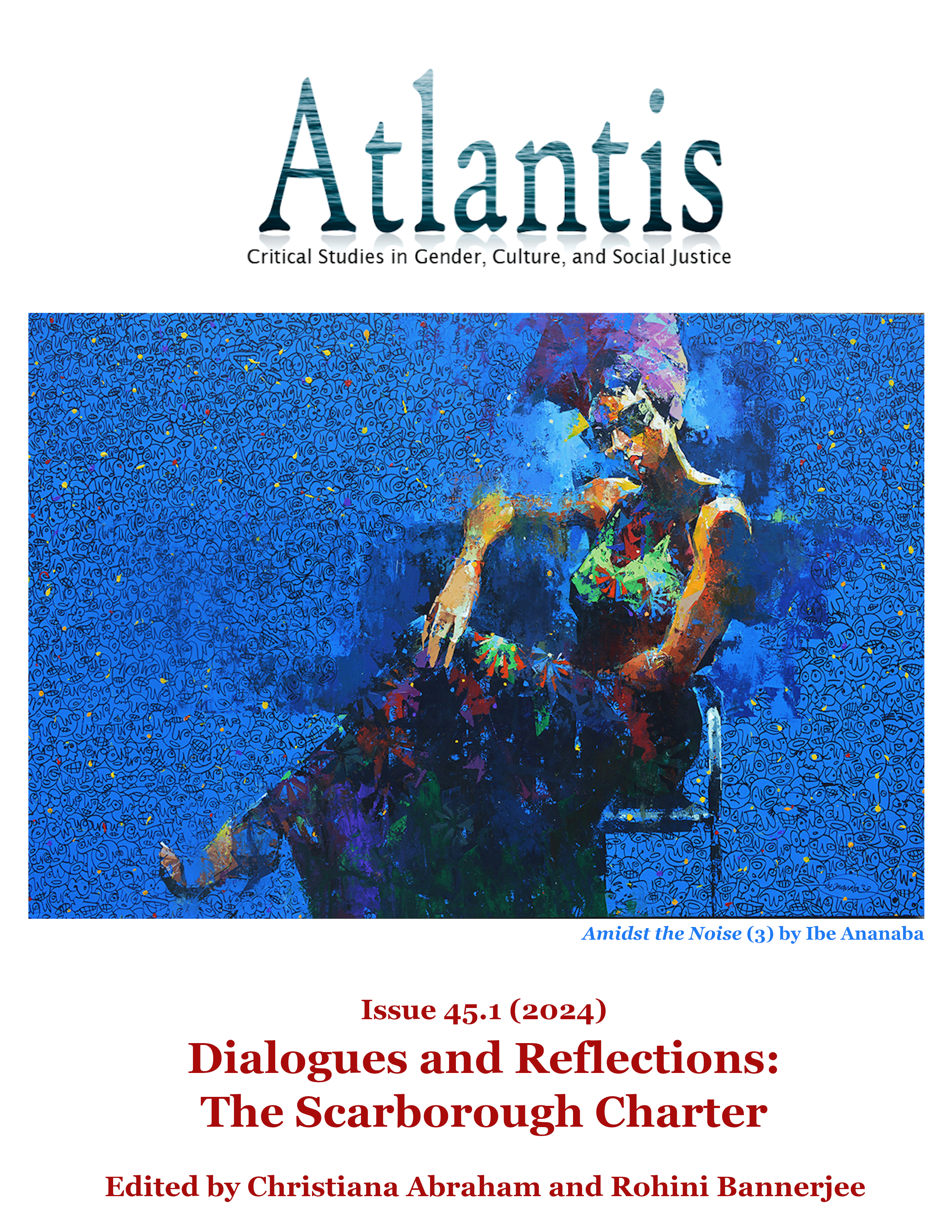Always (Un)learning
A PhD Student’s Reflection on the Scarborough Charter
Keywords:
Equity, Diversity, and Inclusion, mental health, care, social justice, student perspectiveReferences
Ahmed, Sara. 2012. On Being Included: Racism and Diversity in Institutional Life. London: Duke University Press.
Hirji, Faiza, Yasmin Jiwani, and Kirsten Emiko McAllister. 2020. “On the Margins of the Margins: #CommunicationSoWhite—Canadian Style.” Communication, Culture and Critique 13(2):168–84. https://doi.org/10.1093/ccc/tcaa019.
James, Carl E. 2021. “Towards Equity in Education for Black Students in the Greater Toronto Area.” In Colour Matters: Essays on the Experiences, Education, and Pursuits of Black Youth, edited by Carl E. James, 283-308. Toronto, Ontario: University of Toronto Press.
Statistics Canada. 2022. Highest Level of Education by Census Year, Visible Minority and Generation Status: Canada, Provinces and Territories, Census Metropolitan Areas and Census agglomerations. Statistics Canada. December 9. https://www150.statcan.gc.ca/t1/tbl1/en/tv.action?pid=9810042901
Scarborough Charter on anti-Black Racism and Black Inclusion in Canadian Higher Education: Principles, Actions, and Accountabilities. 2021. National Dialogues and Action for Inclusive Higher Education and Communities. https://www.utsc.utoronto.ca/
Downloads
Published
Issue
Section
License
Copyright (c) 2024 Shanice Bernicky

This work is licensed under a Creative Commons Attribution 4.0 International License.
Authors who publish with this journal agree to the following terms:
1. Authors retain copyright and grant the journal right of first publication, with the work simultaneously licensed under a Creative Commons Attribution 4.0 International License that allows others to share the work with an acknowledgement of the work's authorship and initial publication in this journal.
2. Authors are aware that articles published in Atlantis are indexed and made available through various scholarly and professional search tools, including but not limited to Erudit.
3. Authors are able to enter into separate, additional contractual arrangements for the non-exclusive distribution of the journal's published version of the work (e.g., post it to an institutional repository or publish it in a book), with an acknowledgement of its initial publication in this journal.
4. Authors are permitted and encouraged to preprint their work, that is, post their work online (e.g., in institutional repositories or on their website) prior to and during the submission process. This can lead to productive exchanges, as well as earlier and greater citation of published work. Read more on preprints here.







